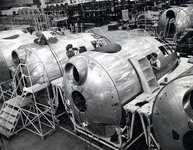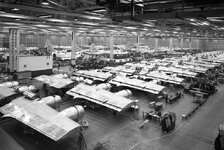HiAnd Mike, this is all good when addressing REPAIRS, especially when dealing with aircraft being flown in combat which is obvious. It's also evident that some scheduled maintenance will be undertaken at this time. The amount of time and effort it takes for repairs will obviously vary between aircraft and units. For example, I can have a training unit of 12 Spitfires of which 10 are flying at any given time and are just used for training, then I have another squadron of the same number experiencing heavy combat, it going to be quite obvious which unit was going to see more downtime, so to get a better picture of operations, you separate the normal SCHEDULED maintenance from the repairs and this will give you a true matrix of were you stand for both situations.
I have worked on aircraft (RAF), Squadron level, major servicing and bay work, but that was over 40 years ago even so there are differences between what I was involved with then and WW2. The part work 'Aero Engineering Volume III Maintenance and Overhaul' has specimen examples of schedule of inspections for the mid 1930s period. This is based on the Avro Anson and the structure would be closer to the Hawker Hurricane, this is for the Rigger (airframes) other trades are also included in the publication:
Mike


